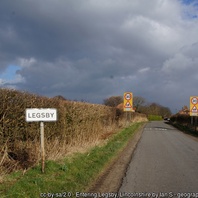
Viking Names
Legsby
Legsby, in the South Riding of Lindsey of Lincolnshire, comes from the Old Norse male personal name Leggr and the Old Norse element by ‘farmstead, village’. The boundary between Legsby and Linwood was recorded as Leggeshou/ Legeshou/ Leggeshow ‘Legg’s mound, burial mound’ presumably named from the same man and Old Norse haugr ‘hill, mound, a burial mound’.
Read More
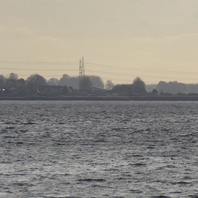
Viking Names
South Ferriby
The name of Ferriby (there is also a North Ferriby across the Humber), in the Yarborough Wapentake of Lincolnshire, comes from the Old Norse elements ferja ‘ferry’ and by ‘farm, settlement’. Both North and South Ferriby were in existence by 1086 and are mentioned in Domesday Book.
Read More
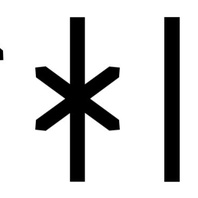
Viking Names
Bothild
Bóthildr, -hilda is a compound name with the first element being Bót- probably to be compared with Old Norse bót ‘remedy, improvement’. While some scholars believe this element is a loan from the continent or England, it is certain that in Scandinavia it was interpreted as bót. The second element of the name is Old Norse -hildr ‘battle’, Both forms of the name are fairly frequent in Norway after c 1300 and it is also found in place-names there. It was rare in Iceland but common in Denmark and also found in Sweden. Bóthildr, -hilda appears as the first element in the medieval field names Botildewellewong in Anston, West Yorkshire, and Botildehau in East Yorkshire. It is also possibly the first element in the field name Botilgarth in Fishlake, West Yorkshire. The name is also well-attested in medieval Yorkshire and Lincolnshire documents.
Read More
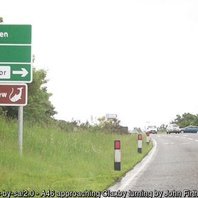
Viking Names
Claxby
Claxby, in the North Riding of Lindsey in Lincolnshire, is formed from the Old Norse male personal name Klakkr and Old Norse by ‘a farmstead, a village’. There are two other identical formations of the place-name in the South Riding of Lindsey of Lincolnshire, Claxby, and Claxby Pluckacre.
Read More
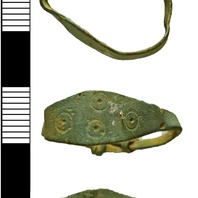
Viking Objects
Stamped Finger-Ring (NARC-031C88)
A stamped copper-alloy finger ring decorated with four double ring-and-dots in a lozengiform arrangement. Ring-and-dot was a decorative technique used at various periods from the later Iron Age onwards, but which enjoyed a Viking Age revival. Rings like this with knotted ends are typically Scandinavian.
Read More

Item
Haverholme
Haverholme, in Kesteven, Lincolnshire, comes from Old Norse hafri ‘oats’ and Old Norse holmr ‘an island, an inland promontory, raised ground in marsh, a river-meadow’. In 1137 the site was given by Alexander, Bishop of Lincoln, to the Cistercians of Fountains Abbey who later left Haverholme for Louth Park and the manor was passed to the Gilbertines in 1139.
Read More
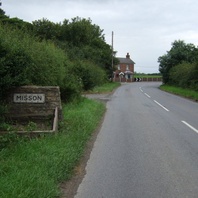
Viking Names
Misson
Misson, in the Bassetlaw Wapentake of Nottinghamshire, is a difficult name. It may be a river name, of which the first element has affinities with Danish mysse, Swedish myssene, or Old Norse mysni ‘a water-plant (?water-arum)’ either as a simplex name or combined with Old Norse á ‘a river’. Alternatively, the name might derive from Old English mos ‘a bog, a swamp; presumably also moss’.
Read More
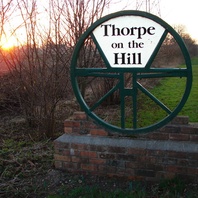
Viking Names
Thorpe on the Hill
Thorpe on the Hill, in the Graffoe Wapentake of Lincolnshire, is a simplex place-name coming from Old Norse þorp ‘a secondary settlement, a dependent outlying farmstead or hamlet’. The affix is self-explanatory.
Read More
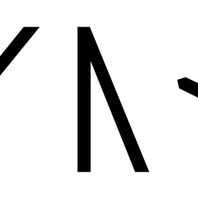
Viking Names
Asmund
Ásmundr is a very common name in Scandinavia throughout the Viking Age and later. It is recorded in medieval documents from both Lincolnshire and Yorkshire, in field-names in Lincolnshire, and in major names in North and West Yorkshire such as Osmotherley and Osmondthorpe. It is an Old Norse compound name. Its first element Ás- ‘a god’, frequent in Viking Age names, presumably refers to Old Norse deities such as Odin and Thor, though the latter name appears in its own right in many names, both male and female, while Odin is a very rare element in personal names. The second element-mundr is either Old West Norse ‘protector’ or Old Norse-Icelandic ‘gift’.
Read More
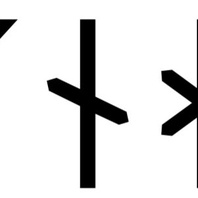
Viking Names
Hrafnhild
Hrafnhildr is recorded in a few instances in West Scandinavia (Norway and Iceland) and in the quasi-historical Icelandic text, Landnámabók ‘The Book of Settlements’ which recounts the settlement of Iceland. It is also attested in two field names in West Yorkshire. The personal name is an Old Norse compound, formed from Hrafn- , ‘raven’, combined with -hildr, ‘battle’.
Read More
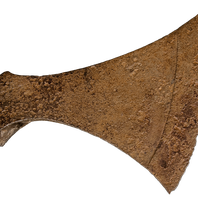
Viking Objects
Socketed Axe (LCNCC:1906.9661.2)
This large socketed iron axe head was found in the River Witham, east of Lincoln, Lincolnshire. Axes were not only a common implement used for a variety of wood-based activities, such as constructing ships, but also were often used as weapons. Axes came in a variety of shapes and sizes depending on their function. Considering the size and shape, this axe was most likely used for warfare rather than as a tool.
